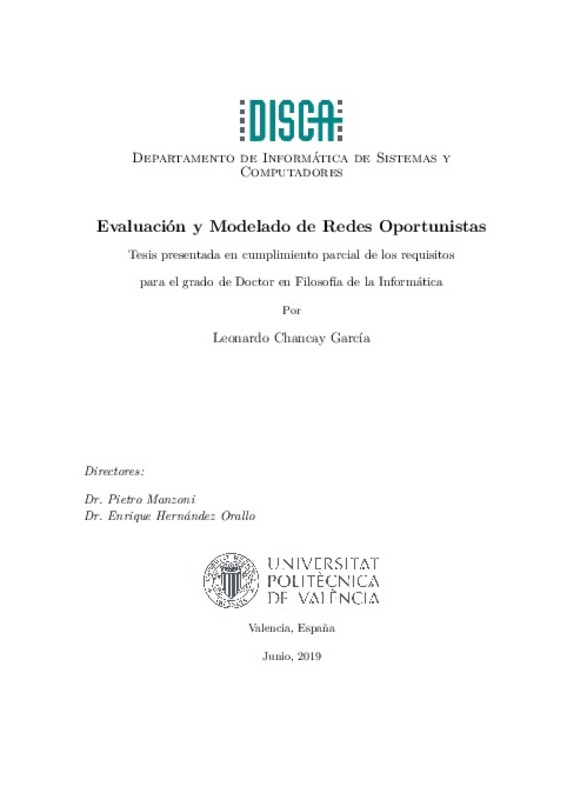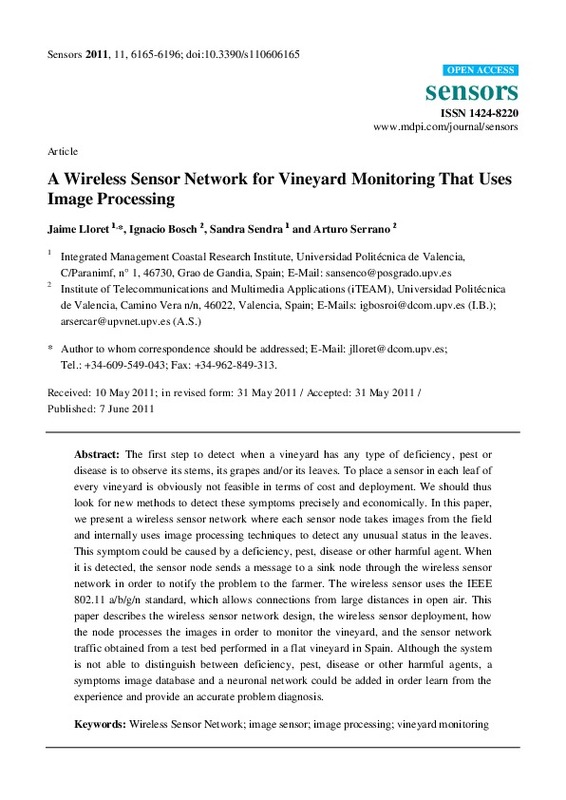JavaScript is disabled for your browser. Some features of this site may not work without it.
Buscar en RiuNet
Listar
Mi cuenta
Estadísticas
Ayuda RiuNet
Admin. UPV
Evolutionary gaming approach for decision making of Tier-3 Internet service provider networks migration to SoDIP6 networks
Mostrar el registro sencillo del ítem
Ficheros en el ítem
| dc.contributor.author | Dawadi, Babu R.
|
es_ES |
| dc.contributor.author | Rawat, Danda B.
|
es_ES |
| dc.contributor.author | Joshi, Shashidhar R.
|
es_ES |
| dc.contributor.author | Manzoni, Pietro
|
es_ES |
| dc.date.accessioned | 2021-03-09T04:32:20Z | |
| dc.date.available | 2021-03-09T04:32:20Z | |
| dc.date.issued | 2020-07-25 | es_ES |
| dc.identifier.issn | 1074-5351 | es_ES |
| dc.identifier.uri | http://hdl.handle.net/10251/163482 | |
| dc.description | This is the peer reviewed version of the following article: Dawadi, BR, Rawat, DB, Joshi, SR, Manzoni, P. Evolutionary gaming approach for decision making of Tier-3 Internet service provider networks migration to SoDIP6 networks. Int J Commun Syst. 2020; 33:e4399, which has been published in final form at https://doi.org/10.1002/dac.4399. This article may be used for non-commercial purposes in accordance with Wiley Terms and Conditions for Self-Archiving. | es_ES |
| dc.description.abstract | [EN] With the increasing number of Internet of Things (IoT) devices, current networking world is suffering in terms of management and operations with lack of IPv4 addresses leading to issues like network address translation (NAT) proliferation, security and quality of services. Software-defined networking (SDN) and Internet Protocol version 6 (IPv6) are the new networking paradigms evolved to address related issues of legacy IPv4 networking. To adapt with global competitive environment and avoid all existing issues in legacy networking system, network service providers have to migrate their networks into IPv6 and SDN-enabled networks. But immediate transformations of existing network are not viable due to several factors like higher cost of migration, lack of technical human resources, lack of standards and protocols during transitions, and many more. In this paper, we present the migration analysis for proper decision making of network transition in terms of customer demand, traffic engineering, and organizational strength with operation expenditure for network migration using evolutionary gaming approach. Joint migration to SDN-enabled IPv6 network from game theoretic perspective is modeled and is validated using numerical results obtained from simulations. Our empirical analysis shows the evolutionary process of network migration while different internal and external factors in the organization affect the overall migration. Evolutionary game in migration planning is supportive in decision making for service providers to develop suitable strategy for their network migration. The proposed approach for migration decision making is mostly applicable to fairly sustained service providers who lack economics, regulation/policy, and resources strengths. | es_ES |
| dc.description.sponsorship | ERASMUS+, Grant/Award Number: KA107; UGC-NP, Grant/Award Number: FRG-074/75-Engg-01; NTNU-EnPE-MSESSD; US National Science Foundation, Grant/Award Numbers: CNS 1650831, HRD 1828811; NAST | es_ES |
| dc.language | Inglés | es_ES |
| dc.publisher | John Wiley & Sons | es_ES |
| dc.relation.ispartof | International Journal of Communication Systems | es_ES |
| dc.rights | Reserva de todos los derechos | es_ES |
| dc.subject | Evolutionary gaming | es_ES |
| dc.subject | IPv6 network | es_ES |
| dc.subject | ISP network migration | es_ES |
| dc.subject | SoDIP6 | es_ES |
| dc.subject | Software-defined network | es_ES |
| dc.subject.classification | ARQUITECTURA Y TECNOLOGIA DE COMPUTADORES | es_ES |
| dc.title | Evolutionary gaming approach for decision making of Tier-3 Internet service provider networks migration to SoDIP6 networks | es_ES |
| dc.type | Artículo | es_ES |
| dc.identifier.doi | 10.1002/dac.4399 | es_ES |
| dc.relation.projectID | info:eu-repo/grantAgreement/EC/Erasmus+/KA107/EU/ | es_ES |
| dc.relation.projectID | info:eu-repo/grantAgreement/NSF//1828811/US/HBCU-RISE: Security Engineering for Resilient Mobile Cyber-Physical Systems/ | es_ES |
| dc.relation.projectID | info:eu-repo/grantAgreement/NSF//1650831/ | es_ES |
| dc.relation.projectID | info:eu-repo/grantAgreement/UGC//FRG%2F74_75%2FEngg-1/ | es_ES |
| dc.rights.accessRights | Abierto | es_ES |
| dc.contributor.affiliation | Universitat Politècnica de València. Departamento de Informática de Sistemas y Computadores - Departament d'Informàtica de Sistemes i Computadors | es_ES |
| dc.description.bibliographicCitation | Dawadi, BR.; Rawat, DB.; Joshi, SR.; Manzoni, P. (2020). Evolutionary gaming approach for decision making of Tier-3 Internet service provider networks migration to SoDIP6 networks. International Journal of Communication Systems. 33(11):1-17. https://doi.org/10.1002/dac.4399 | es_ES |
| dc.description.accrualMethod | S | es_ES |
| dc.relation.publisherversion | https://doi.org/10.1002/dac.4399 | es_ES |
| dc.description.upvformatpinicio | 1 | es_ES |
| dc.description.upvformatpfin | 17 | es_ES |
| dc.type.version | info:eu-repo/semantics/publishedVersion | es_ES |
| dc.description.volume | 33 | es_ES |
| dc.description.issue | 11 | es_ES |
| dc.relation.pasarela | S\430018 | es_ES |
| dc.contributor.funder | European Commission | es_ES |
| dc.contributor.funder | National Science Foundation, EEUU | es_ES |
| dc.contributor.funder | University Grants Commission, India | es_ES |
| dc.contributor.funder | Nepal Academy of Science and Technology | es_ES |
| dc.contributor.funder | Norwegian University of Science and Technology | es_ES |
| dc.description.references | Livadariu, I., Elmokashfi, A., & Dhamdhere, A. (2017). On IPv4 transfer markets: Analyzing reported transfers and inferring transfers in the wild. Computer Communications, 111, 105-119. doi:10.1016/j.comcom.2017.07.012 | es_ES |
| dc.description.references | Dawadi, B. R., Rawat, D. B., & Joshi, S. R. (2019). Software Defined IPv6 Network: A New Paradigm for Future Networking. Journal of the Institute of Engineering, 15(2), 1-13. doi:10.3126/jie.v15i2.27636 | es_ES |
| dc.description.references | Rizvi, S. N., Raumer, D., Wohlfart, F., & Carle, G. (2015). Towards carrier grade SDNs. Computer Networks, 92, 218-226. doi:10.1016/j.comnet.2015.09.029 | es_ES |
| dc.description.references | Sezer, S., Scott-Hayward, S., Chouhan, P., Fraser, B., Lake, D., Finnegan, J., … Rao, N. (2013). Are we ready for SDN? Implementation challenges for software-defined networks. IEEE Communications Magazine, 51(7), 36-43. doi:10.1109/mcom.2013.6553676 | es_ES |
| dc.description.references | ONF TR‐506.SDN migration considerations and use cases.;2014.https://www.opennetworking.org/wp-content/uploads/2014/10/sb-sdn-migration-use-cases.pdf. | es_ES |
| dc.description.references | Raza, M. H., Sivakumar, S. C., Nafarieh, A., & Robertson, B. (2014). A Comparison of Software Defined Network (SDN) Implementation Strategies. Procedia Computer Science, 32, 1050-1055. doi:10.1016/j.procs.2014.05.532 | es_ES |
| dc.description.references | Wu, P., Cui, Y., Wu, J., Liu, J., & Metz, C. (2013). Transition from IPv4 to IPv6: A State-of-the-Art Survey. IEEE Communications Surveys & Tutorials, 15(3), 1407-1424. doi:10.1109/surv.2012.110112.00200 | es_ES |
| dc.description.references | Contreras, L. M., Doolan, P., Lønsethagen, H., & López, D. R. (2015). Operational, organizational and business challenges for network operators in the context of SDN and NFV. Computer Networks, 92, 211-217. doi:10.1016/j.comnet.2015.07.016 | es_ES |
| dc.description.references | Sandhya, Sinha, Y., & Haribabu, K. (2017). A survey: Hybrid SDN. Journal of Network and Computer Applications, 100, 35-55. doi:10.1016/j.jnca.2017.10.003 | es_ES |
| dc.description.references | ON.LAB.Driving SDN adoption in service provider networks.;2014.http://onosproject.org/wp-content/uploads/2014/11/Whitepaper-Service-Provider-SDN-final.pdf. | es_ES |
| dc.description.references | SANDVINE. Carrier grade NAT: Mitigate IPv4 address exhaustion while maintaining network visibility.https://www.sandvine.com/hubfs/Procera_Live_Site_Files/PDF_Live_Site/Solutions_brief/SB_CGNAT.pdf. Published2018. . | es_ES |
| dc.description.references | F5. Carrier‐grade NAT (CGNAT) for service providers.https://www.f5.com/services/resources/use-cases/carrier-grade-nat-for-service-providers. Accessed September 20 2019. | es_ES |
| dc.description.references | Trinh, T. A., Gyarmati, L., & Sallai, G. (2010). Migrating to IPv6: A game-theoretic perspective. IEEE Local Computer Network Conference. doi:10.1109/lcn.2010.5735739 | es_ES |
| dc.description.references | Nikkhah, M. (2016). Maintaining the progress of IPv6 adoption. Computer Networks, 102, 50-69. doi:10.1016/j.comnet.2016.02.027 | es_ES |
| dc.description.references | Hu, T., Yi, P., Zhang, J., & Lan, J. (2018). A distributed decision mechanism for controller load balancing based on switch migration in SDN. China Communications, 15(10), 129-142. doi:10.1109/cc.2018.8485475 | es_ES |
| dc.description.references | TaoP YingC SunZ TanS WangP SunZ.The controller placement of software‐defined networks based on minimum delay and load balancing. In:2018 IEEE 16th Intl Conf on Dependable Autonomic and Secure Computing 16th Intl Conf on Pervasive Intelligence and Computing 4th Intl Conf on Big Data Intelligence and Computing and Cyber Science and Technology Congress (DASC/PiCom/DataCom/CyberSciTech).;2018:310‐313. | es_ES |
| dc.description.references | Wang, K.-Y., Kao, S.-J., & Kao, M.-T. (2018). An efficient load adjustment for balancing multiple controllers in reliable SDN systems. 2018 IEEE International Conference on Applied System Invention (ICASI). doi:10.1109/icasi.2018.8394323 | es_ES |
| dc.description.references | Xu, H., Li, X.-Y., Huang, L., Deng, H., Huang, H., & Wang, H. (2017). Incremental Deployment and Throughput Maximization Routing for a Hybrid SDN. IEEE/ACM Transactions on Networking, 25(3), 1861-1875. doi:10.1109/tnet.2017.2657643 | es_ES |
| dc.description.references | Khorramizadeh, M., & Ahmadi, V. (2018). Capacity and load-aware software-defined network controller placement in heterogeneous environments. Computer Communications, 129, 226-247. doi:10.1016/j.comcom.2018.07.037 | es_ES |
| dc.description.references | LanW LiF LiuX QiuY.A dynamic load balancing mechanism for distributed controllers in software‐defined networking. In:2018 10th International Conference on Measuring Technology and Mechatronics Automation (ICMTMA).;2018:259‐262. | es_ES |
| dc.description.references | TR‐506 O.SDN Migration considerations and use cases.;2014. | es_ES |
| dc.description.references | Kobayashi, M., Seetharaman, S., Parulkar, G., Appenzeller, G., Little, J., van Reijendam, J., … McKeown, N. (2014). Maturing of OpenFlow and Software-defined Networking through deployments. Computer Networks, 61, 151-175. doi:10.1016/j.bjp.2013.10.011 | es_ES |
| dc.description.references | BabikerH NikolovaI ChittimaneniKK.Deploying IPv6 in the Google Enterprise Network. Lessons learned. In:Proceedings of the 25th International Conference on Large Installation System Administration.;2011:10. | es_ES |
| dc.description.references | APNIC. IPv6 capability measurement.https://stats.labs.apnic.net/ipv6. Accessed February 15 2020. | es_ES |
| dc.description.references | Google Incl. IPv6 user access status.https://www.google.com/intl/en/ipv6/statistics.html. Accessed February 16 2020. | es_ES |
| dc.description.references | Abdullah, S. A. (2019). SEUI-64, bits an IPv6 addressing strategy to mitigate reconnaissance attacks. Engineering Science and Technology, an International Journal, 22(2), 667-672. doi:10.1016/j.jestch.2018.11.012 | es_ES |
| dc.description.references | KreutzD RamosF VerissimoP RothenbergCE AzodolmolkyS UhligS.Software‐defined networking: A comprehensive survey.arXiv Prepr arXiv14060440.2014. | es_ES |
| dc.description.references | DawadiBR RawatDB JoshiSR KeitschMM.Recommendations for energy efficient SoDIP6 network deployment at the early stage rural ICT expansion of Nepal. In: 2019International Conference on Computing Networking and Communications ICNC 2019.;2019.https://doi.org/10.1109/ICCNC.2019.8685567 | es_ES |
| dc.description.references | WintherM.Tier 1 isps: what they are and why they are important. IDC White Pap2006:1‐13. | es_ES |
| dc.description.references | DawadiBR RawatDB JoshiSR.Evolutionary dynamics of service provider legacy network migration to software defined IPv6 network. In:International Conference on Computing and Information Technology;2019:245‐257. | es_ES |
| dc.description.references | BriainDÓ DenieffeD KavanaghY OkelloD.A proposed architecture for distributed Internet eXchange Points in developing countries. In:2018 IST‐Africa Week Conference (IST‐Africa).;2018:Page‐‐1. | es_ES |
| dc.description.references | ChatzisN SmaragdakisG FeldmannA.On the importance of Internet eXchange Points for today's Internet ecosystem.arXiv Prepr arXiv13075264.2013. | es_ES |
| dc.description.references | RyanPS GersonJ.A primer on Internet exchange points for policymakers and non‐engineers.Available SSRN 2128103.2012. | es_ES |
| dc.description.references | BogineniK.Introducing ONOS: A SDN network operating system for service providers.White Pap.2014. | es_ES |
| dc.description.references | Karakus, M., & Durresi, A. (2018). Economic Viability of Software Defined Networking (SDN). Computer Networks, 135, 81-95. doi:10.1016/j.comnet.2018.02.015 | es_ES |
| dc.description.references | Shakkottai, S., & Srikant, R. (2006). Economics of Network Pricing With Multiple ISPs. IEEE/ACM Transactions on Networking, 14(6), 1233-1245. doi:10.1109/tnet.2006.886393 | es_ES |
| dc.description.references | Weiss, M. B., & Shin, S. (2002). Internet Interconnection Economic Model and its Analysis: Peering and Settlement. Communication Systems, 215-231. doi:10.1007/978-0-387-35600-6_10 | es_ES |
| dc.description.references | De Souza, E. P., Ferreira, E. M., & Neves, A. G. M. (2018). Fixation probabilities for the Moran process in evolutionary games with two strategies: graph shapes and large population asymptotics. Journal of Mathematical Biology, 78(4), 1033-1065. doi:10.1007/s00285-018-1300-4 | es_ES |
| dc.description.references | Klimek, P., Thurner, S., & Hanel, R. (2010). Evolutionary dynamics from a variational principle. Physical Review E, 82(1). doi:10.1103/physreve.82.011901 | es_ES |







![[Cerrado]](/themes/UPV/images/candado.png)



